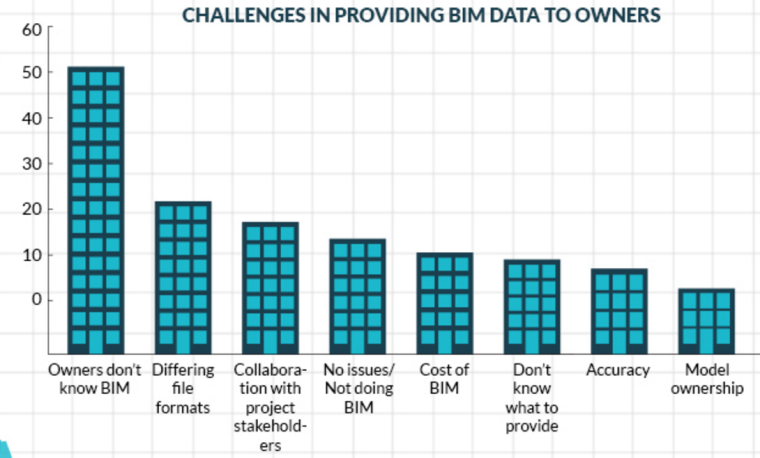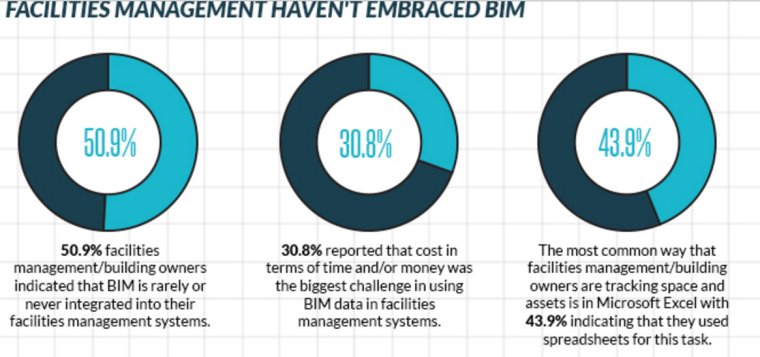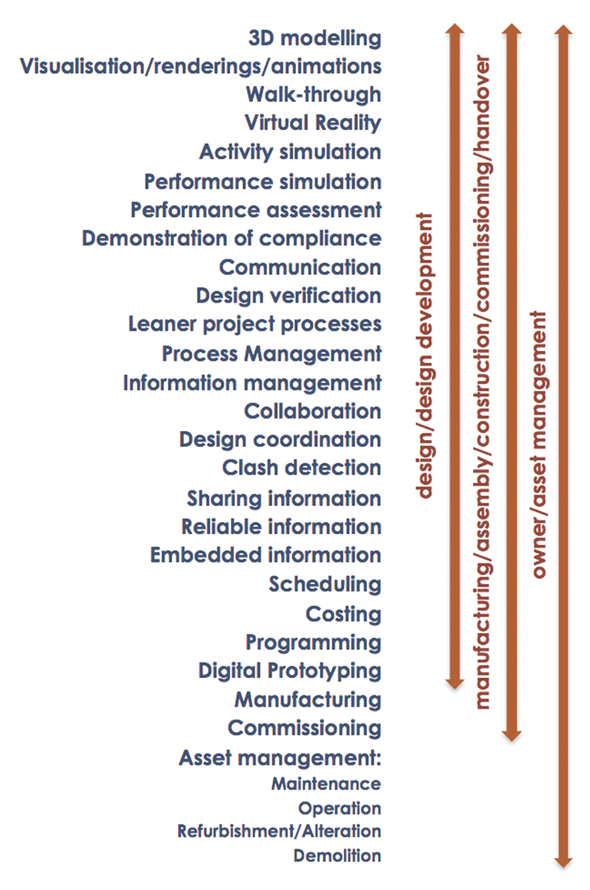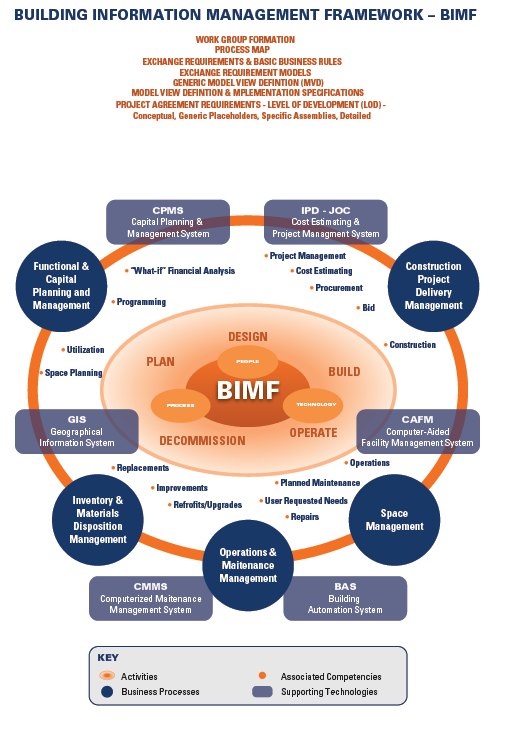COBie – May 20, 2016
Copy of COBieConstructionTemplate

Efficient life-cycle management of facilities and other physical infrastructure is impossible until real property owners are better educated and truly capable in their role as stewards of the built environment.
LEAN best management practices and associated collaborative construction delivery methods (Integrated project delivery – IPD, Job Order Contracting – JOC, etc.) are REQUIRED in order to deliver quality renovation, repair, sustainability, and new construction projects on-time and on-budget.
Most Owners do not have the educational background or professional experience needed to consistently deploy LEAN construction delivery methods and/or life-cycle management.


4Clicks Solutions, LLC is currently beta testing Ceasel, a next generation cloud computing application to enable collaborative construction cost estimating and associated efficient project delivery.
Cloud computing is more than a catalyst for change, it is a DISRUPTIVE TECHNOLOGY, that will significantly enhance productivity within the Architecture, Engineering, Construction, and Facility Management sectors.
Different form legacy client/server applications or “web-enabled” systems that tend to automate existing ‘ad hoc’ and inefficient business process, Ceasel and other “built from the ground” true cloud computing applications enables embed business best practices and drive true collaboration among Owners, Contractors, Architects, Engineers. The core focus ends up being upon CHANGE MANAGEMENT and how to best leverage cloud computing, vs. the technology itself.
Here’s just a few benefit of Ceasel’s cloud computing …
1. Collaboration – True cloud computing (vs. cloud-washing or simply posting legacy applications to the cloud) lets users work concurrently on projects in real-time…virtually anyone, anywhere, anytime in multiple languages and currencies.
2. Data Integrity – Information is NEVER deleted. This is potentially the best form of security available. “Who” does “What” and “When” is always tracked and changes can be “rolled back” at any time by authorized administrators.
3. Data Protection – It is YOU, the user who determines how, when, and where to publish data. For example, you can maintain information in your private area, publish as read only to specified members within a private cloud…or publish to all members in a private cloud, or publish information to all members in public cloud and enable rights to use and modify data.
4. Visualization – DATA visualization and the associated development and implementation of collaborative construction delivery methods such as integrated project delivery – IPD, and job order contracting, JOC, enable shared information earlier in the project life-cycle and among more participants. This enable errors to be found and corrected and/or changes to be accomplished earlier in the project timeline. This results in few change orders, faster project timelines, and virtual elimination of legal disputes. Cloud computing will accelerate data visualization and transparency among all stakeholders of physical infrastructure and promote multiple forms of performance-based processes.
5. Agility – Our work and natural environments are changing at an accelerated pace. Rapid deployment, monitoring, and the associated continuous modification of processes and policies are becoming increasingly important. Cloud computing deploys processes faster than any other method currently available. There is no longer a need to rely upon internal “IT” for deployment or applications specific changes, computing power, storage space, etc.
6. Mobility – It is neither cost effective, nor efficient, to have everyone working in offices or specified work settings. Resources need to be tapped from multiple locations enabling use of “the best of the best”. Cloud computing allows direct, transparent access to local resources while also communicating centralized processes and procedures.
7. Centralization of Information – While information can be scattered among several data centers, it also can be instantly consolidated to provide global management in support of an organization’s mission as well as associated, efficient local action.
8. Business Continuity – While Internet access is required (unless you host the “cloud” internally), would you rather store your information at your location and risk catastrophic failure, or at a location with multiple redundancies?
If you are interested in becoming a beta partner, please contact pcholakis@4Clicks.com
One thing is clear, the construction sector (architecture, engineering, contractors, owners, operators, users, suppliers) has been lagging virtually all other business sectors for decades with respect to productivity improvement.
I believe that the cause is largely cultural, however, any major improvement must be driven by Owners,and/or mandated by governmental regulation.
My reasoning is simple, Owners pay the bills. Thus as long as Owners remain satisfied with the status quo and/or remain “uneducated” with respect to proven business “best practices” and lean management processes, as well as supporting technologies, economic and environmental waste will continue to be rampant.
Currently, my outlook is somewhat pessimistic. If one looks at capability and knowledge specific to life-cycle facility management from an industry perspective, most has originated with the government sector, followed by higher education, state government, healthcare, process-based industries, etc. etc. Basically, Owners whose mission is dependent upon their built environment tend to create and follow life-cycle management practices. These are Owners that can’t adopt a “churn and burn”, or “run to failure” approach to facility management. These sectors can’t easily pack up and move if their facilities and physical infrastructure fail.
That said, even government owners, for the most part, have failed in any sort of department or agency-wide adoption of standardized best practices. This is true even for “simple” areas such as facility repair, maintenance, and renovation. Only the Air Force appears to come close to having any true adoption of robust, proven, best-practices in this regard, as well as associated training, etc., most notably with their SABER construction delivery structure.
In order to effect measurable productivity improvement in the “construction” sector, , I have put together a core requirements “checklist”.
1. Robust Ontology – Cost effective information management and information reuse can only be accomplished with a detailed set of terms, definitions, metrics, etc. This aspect is also critical to improved strategic and tactical decision support mechanisms.
2. An understanding of life-cycle management of the built environment from a collaborative, best-practices, process perspective as well as associated supporting technologies. Forget the traditional strategy-design-construction-demolish approach.
3. Commitment to a total cost of ownership perspective including both economic and environmental costs vs. our classic “first-cost” mentality.
4. “Trust but measure” – Owners MUST conduct their own internal cost estimating and associated capital planning and compare these to contractor estimates, with each party using the same data architecture (examples: RSMeans, masterformat, uniformat, omniclass).
5. Adoption of collaborative construction delivery methods such as Integrated Project Delivery, IPD, and Job Order Contracting, JOC, in lieu of antagonistic and inefficient design-bid-built, or even design-build.
6. STOP reinventing the wheel. Nothing noted here is “rocket science”. Many, if not most, processes, procedures, and technologies are readily available for anyone who does a bit of basic research!!! Also, stop with the focus upon BIM from a 3D visualization perspective! 3D tools are great, and add value, however, INFORMATION and PROCESS drive success.
If you can’t see the whole picture… you can’t appreciate BIM.
Hard to believe…perhaps to some… but many /most of us in the Architecture, Construction, Owners, Operations sector still don’t know how to define BIM.
Anna Winstanley and Nigel Fraser of Lean BIM Strategies Limited provided the most likely reason in a recent perspective… if you can’t see the whole picture… you can’t appreciate BIM.
BIM Definition – Short – The life-cycle management of the built environment supported by digital technology.

 via http://www.4Clicks.com – Premier cost estimating and efficient project delivery software supporting JOC, SABER, IDIQ, SATOC, MATOC, MACC, POCA, BOA … and featuring integrated contract, project, document management, visual estimating/quanity take-off. QTO, and an exclusively enhanced 400,000 line itme RSMeans Cost database.
via http://www.4Clicks.com – Premier cost estimating and efficient project delivery software supporting JOC, SABER, IDIQ, SATOC, MATOC, MACC, POCA, BOA … and featuring integrated contract, project, document management, visual estimating/quanity take-off. QTO, and an exclusively enhanced 400,000 line itme RSMeans Cost database.
Here’s a quick overview of a recent meeting discussing the legal aspects of BIM held July 2013.
‘Experts’ we gathered by RIBA Enterprises to discuss the topic. Key items a noted below:
1. CIC Protocol requires employers/onwers to put the protocol in place for all team members and upate the model production delivery table is updated and that an information manager is appointed.Project team members are required to provide specified levels of information, with a reasonable level of care.
2. Key to manage expectations early on in the project.
3. Protocol doesn’t really change liability in itself. That said, the concept of Level of Detail (LOD) become important in determining what information is considered ‘sufficient’ when team members are delivering information to “employers/owners”. Greaeter definition is required for both “data”, i.e. COBie and geometries.
4. Common data is a central requirement and robust management/business rules must be followed to assure development and use.
5. An information manager should not be confused with a design manager. The information manager role spans multiple disciplines / competencies.
6. Copyrights and other intellectual property issues are not any more complicated and appropriate licenses/rights should be established/obtained for owners/team use at the onset of the project.
The key principles of the application of the CIC BIM Protocol are as follows:
All parties that are responsible for the production of Building Information Models on behalf of the Employer should have the Protocol incorporated into their contract/appointment.
The same version of the Protocol and Appendices should be incorporated into each contract.
The wording of the CIC BIM Protocol should not be amended
The Protocol should detail all Building Information Models that are going to be produced by all parties contracted to the employer on the project
The Appendices have to be completed with project specific information for all projects. This should be available from pre-appointment documentation such as the Employer’s Information Requirements.
Changes to the Protocol and its Appendices should be treated as variations to the Contract
–http://www.bimtaskgroup.org/bim-protocol/
BIM-Protocol-appendix-2 (1) BIM-Protocol-Appendix-1 The-BIM-Protocol
via http://www.4Clicks.com – Premier cost estimating and efficient project delivery software – JOC, SABER, IDIQ, MATOC, SATOC, MACC, POCA, BOA… featuring integrated contract, project, and document management, visual estimating/QTO, and an exclusively enhanced 400,000+ RSMeans line item cost database with line item modifiers and full descriptions.
Note: The above is not intended as legal advice of any type, but rather a simple report on the session.
As the old saying goes…”you can’t manage what you don’t measure”.
Here’s the beginning of a list of information requirements spanning various domains/competencies, technologies, etc.,
While an important component, the 3D component of BIM has been a very unfortunate distraction. It appears that many/most have “gone to the weeds” and/or are “recreating the wheel” vs. working on core foundational needs such as the consistent use of appropriate terminology and the establishment of robust, scalable and repeatable business practices, methodologies, standards, metrics and benchmarks for facilities and physical infrastructure management.
It is common terminology that enables effective communication and transparency among the various decision makers, building managers, operators and technicians involved with facilities and physical infrastructure investment and management.
Here are examples of metrics associated with the life-cycle management of the built environment:
Annualized Total Cost of Ownership (TCO) per building per gross area = Rate per square foot
Annualized TCO per building/Current replacement value = Percent of Current Replacement Value (CRV)
Annualized TCO per building/Net assignable square feet = Cost rate per net assignable square feet per building
Annualized TCO per building/Non-assignable square feet = Cost rate per non-assignable square feet per building
Annualized TCO per building/Building Interior square feet = Cost rate per interior square foot per building
Churn Rate
Utilization Rate
AI (Adaptation Index) or PI (Programmatic Index) = PR (Program Requirements) /
CRV (Current Replacement Value)
Uptime or Downtime – Defined in percent, as amount of time asset is suitable for the program(s) served.
Facility Operating Gross Square Foot (GSF) Index (SAM Performance Indicator: APPA 2003)
Custodial Costs per square foot
Grounds Keeping Costs per square foot
Energy Costs per square foot
Energy Usage
Utility Costs per square foot
Waste Removal Costs per square foot
Facility Operating Current Replacement Value (CRV) Index (SAM Performance Indicator: APPA 2003)
Planned/Preventive Maintenance Costs per square foot
Emergency Maintenance Costs as a percentage of Annual Operations Expenditures.
Unscheduled/Unplanned Maintenance Costs as a percentage of Annual Operations Expenditures.
Repair costs (man hours and materials) as a percentage of Annual Operations Expenditures
FCI (Facility Condition Index) = DM (Deferred Maintenance) + CR (Capital Renewal)
/ CRV (Current Replacement Value)
Recapitalization Rate, Reinvestment Rate
Deferred Maintenance Backlog
Facilities Deterioration Rate
FCI (Facility Condition Index) = DM (Deferred Maintenance) + CR (Capital Renewal) /
CRV (Current Replacement Value)
AI (Adaptive Index) or PI (Programmatic Index) = PR (Program Requirements) /
CRV (Current Replacement Value)
FQI (Facility Quality Index) or Quality Index or Index = FCI (Facility Condition Index)+ AI (Adaptive Index)
 Via http://www.4Clicks.com – Premier cost estimating and efficient project delivery software for the built environment – , …
Via http://www.4Clicks.com – Premier cost estimating and efficient project delivery software for the built environment – , …
The construction industry (architecture, engineering, construction, operations/facility management, business product manufacturers, oversight and regulatory groups), like most other sectors, is in a state of rapid change.
Construction delivery methods are at the center of this ongoing transformation as they dictate the structure, tone, and legal requirements of any project. Thus, whether you are involved with construction, renovation, repair, and/or sustainability projects… Integrated Project Delivery – IPD, for new construction, Job Order Contracting – JOC, for minor new construction, renovation, repair, and sustainability and Public Private Partnerships – PPP, are examples of collaborative construction delivery methods that are rapidly replacing traditional and somewhat dysfunctional methods such as Design Bid Build (DBB).
While collaborative construction delivery methods have been in existence for decades and are well proven, they are only recently being more readily adopted. The drivers for change include environmental, economic, and technology factors. We are all aware of shrinking resources whether budgetary or non-renewal energy related, as well as associated environmental regulations relative to global warming, the latter of which will become increasingly stringent. That said, disruptive technologies such as BIM (Building Information Modeling) and Cloud Computing are also a major causal factors as well as enablers relative the business process change so desperately needed with the construction sector.
As collaborative construction delivery methods become more common, the need to share information transparently becomes paramount. Project teams need to adapt to early and ongoing information sharing among distributed team members and organizations. In the case of JOC (also known as SABER in in the United State Air Force), technology has been available for over a decade to support virtually all aspects of collaborative project execution from concept thru warranty period. An example is 4Clicks Project Estimator combined with RSMeans Cost Data, and/or organizational specific unit price books. With all parties leveraging the same data and following robust, collaborative processes from concept, thru site walk, construction, etc., the net result being more jobs being done on-time and on-budge with fewer change orders and virtual elimination of the legal disputes, the latter be unfortunately common with traditional methods.

How built environment stakeholders share information and work together will continue to evolve. The methods in which we, as Owners, Contractors, AEs, etc. participate in this exchange within our domains will determine our ultimate success or failure.
As show in the following graphic, the project delivery methods, while a fundamental element, is just one “piece of the BIM pie”.
Multiple “activities” , business processes” , “competencies”, and “supporting technologies” are involved in BIM.
BIM is “the life-cycle management of the built environment supported by digital technologies”.

| Year | Country | Action | Reference |
| 2007 | Finland | Requires IFC BIM in its projects and intends to have integrated model-based operation in future | Senate Properties |
| UK | Standard: Collaborative production of architectural, engineering and construction information. Code of Practice. | BS 1192:2007 | |
| 2008 | USA | Mandatory BIM for government projects | GSA; USACE |
| 2010 | Norway | Requires IFC BIM for new buildings | Statsbygg |
| 3 BIM pilot projects running | Norwegian Defence Estates Agency | ||
| Singapore | Establish Centre for construction IT help key agencies and construction firms to kick start BIM | Singapore BIM Roadmap 2012 | |
| UK | Building Information Management – A Standard Framework and Guide to BS 1192 | Joint publication of BS 1192:2007 and BSI/CPI | |
| 2011 | Singapore | Work with key agencies on pilot projects | Singapore BIM Roadmap 2012 |
| UK | Creation of the implementation plan and team to deliver | Government Construction Strategy (May) | |
| Evaluate trial projects and recommend (ongoing) | |||
| Standard Due: Library Objects for Architecture, Engineering and Construction. Recommended 2D symbols of building elements for use in building information modelling. | BS 8541-2 | ||
| Standard Due: Library Objects for Architecture, Engineering and Construction: Identification and grouping | BS 8541-1 | ||
| Report/Strategy Paper for the Government Construction Client Group (March) | BIM Industry Working Group | ||
| 2012 | Korea | Public Procurement Service to fully adopt IFC-based open BIM | |
| Singapore | BIM as part of public sector building project procurement | Singapore BIM Roadmap 2012 | |
| Work with key agencies to prepare consultants and contractors who undertake the public sector projects to be BIM ready | |||
| BIM Guide – published | Singapore BIM Guide | ||
| Finland | Common BIM Requirements – published | buildingSMART Finland | |
| UK | Begin phased roll out ot all Government projects (Summer) | Government Construction Strategy | |
| Define and mandate expected standard (information set) for Government projects (April) | |||
| Identify trial projects in multiple departments to achieve delivery via 3D fully collaborative BIM (July) | |||
| COBie-UK-2012 | BIM Task Group | ||
| Standard due: Library Objects for Architecture, Engineering and Construction: Shape and measurements | BS 8541-3 | ||
| Standard due: Library Objects for Architecture, Engineering and Construction: Attributes for specification and simulation | BS 8541-4 | ||
| Building Information Management Management – Information requirements for the capital delivery phase of construction projects | PAS 1192-2:2012 | ||
| Operational Asset Management – Processes and data for the commissioning, handover, operation and occupation stages | BS 1192-3 (not yet published) | ||
| 2013 | Australia | Develop and deliver a BIM awareness and promotion program for key government and broader industry participants (July 1) | Implementation Strategy – National BIM Initiative Report |
| Develop and start delivery of BIM training packages to industry practitioners (July 1) | |||
| Enable progressive access to an Australian library of generic BIM objects and information for manufactured products that comply with Australian BIM standards (July 1) | |||
| Singapore | Mandatory Architecture BIM e-Submissions for all new building projects . 20,000 m² | Singapore BIM Roadmap 2012 | |
| 2014 | Australia | Develop Australian BIM contracts (July 1) | Implementation Strategy – National BIM Initative Report |
| Encourage the inclusion of BIM as a collaborative technology for both professional education and vocational training in the tertiary sector (July 1) | |||
| Develop industry protocols for information exchange to underpin BIM and collaborative practice (July 1) | |||
| Coordinate activity between relevant sectors of the Australian economy to enable integrated access to land, geospatial and building information (July 1) | |||
| Singapore | Mandatory Engineering BIM e-Submissions for all new building projects . 20,000 m² | Singapore BIM Roadmap 2012 | |
| 2015 | Australia | Develop Australian technical codes and standards for BIM (July 1) | Implementation Strategy – National BIM Initative Report |
| Align Australian BIM codes and standards with international equivalents (july 1) | |||
| Develop a model-based building regulatory compliance process demonstrator (July 1) | |||
| Develop and implementation plan for the transition of Australian regulatory codes and compliance mechanisms to model-based performance based systems (july 1) | |||
| Require BIM for Australian Government procurement for built environment projects (July 1) | |||
| Encourage State and Territory Governments and the private sector to require BIM for procurement for built environment projects (July 1) | |||
| Singapore | Mandatory Architecture & Engineering BIM e-Submissions for all new building projects . 5,000 m² | Singapore BIM Roadmap 2012 | |
| Target = Singapore Construction Industry to use BIM widely | |||
| 2016 | UK | Deliver Level 2 BIM (Collaboration) – Introduce a progressive programme of mandated use of fully collaborative Building Information Modelling for Government projects. Level 2 = Managed 3D environment held in separate discipline “BIM(M)” tools with attached data; Commercial data managed by an ERP; Integration on the basis of proprietary interfaces or bespoke middleware could be regarded as “pBIM” (proprietary); the approach may utilise 4D programme data and 5D cost elements. | UK Government Construction Strategy & BIM BIM Strategy Paper (2011) |
| Source: Susan Keenliside, 2013-email, via http://www.4Clicks.com | |||
| 2020 | Singapore | Realise the vision of a highly integrated and technologically advanced construction sector that will be led by progressive firms and supported by a skilled and competent workforce. | Singapore BIM Roadmap 2012 |
The primary focus of the NBIMS-US™ is to provide open standards to transform the currently inefficient and ineffective life-cycle management of the built environment… Is this not the same value provided by BIM?
This transformation is accomplished through the creation and exchange of building information modeling (BIM) information and management processes. Elements included include reference standards; outlining classifications of data and processes, data exchange formats, requirements for many different types of information exchanges and practice standards; which outline practices and workflows for data modeling, project execution, and robust feedback on success or failures so that assumptions are quickly improved. The metrics by which these open standards are to be evaluated include: total cost of ownership vs. first costs, impacts upon organizational mission, sustainability, life-safety, utilization, up-time, project timelines, fewer change orders, fewer legal disputes, ….
Goals, Objectives, and Benefits of NBIMS and BIM:
Building Owner Perspective
Contractor Perspective
A/E Perspective
Business Product Manufacturer (BPM) Perspective
1. How can I make my products available to designers and contractors so that they fit in with BIM project delivery processes
2. How should I format my products as BIM objects (e.g. level of graphical detail and business properties) so they are most useful by designers and contractors
3. I am interested in getting designers and contractors to specify and purchase my product
ALL:
1. How to use BIM for specific construction tasks (e.g. cost estimating, material procurement, digital fabrication, valuation of in-place construction, commissioning and handover, safety management)
2. How to mitigate risk.
3. How to organize my organization and project teams to take advantage of BIM processes and technologies.
4. How to participate in emerging efficient project delivery processes to focus on design excellence, meeting project schedules and exceeding client service expectations.
5. I am interested in optimizing staff resources, project profitability, maintaining relationships with my clients and finding the next job
Ballot Cover Letter Statement:
The National BIM Standard is a consensus document, where many ideas are brought together, presented to a variety of people representing different parts of the industry, discussed, debated, and ultimately subjected to the democratic process to determine which ideas rise to the stature of inclusion.
Related docu,ment – http://fire.nist.gov/bfrlpubs/build04/PDF/b04022.pdf – Cost Analysis of Inadequate Interoperability in the U.S. Capital Facilities Industry Michael P. Gallaher, Alan C. O’Connor, John L. Dettbarn, Jr., and Linda T. Gilday